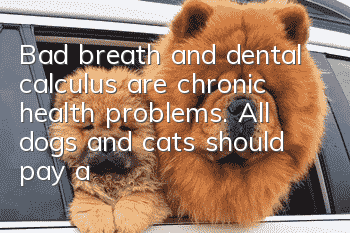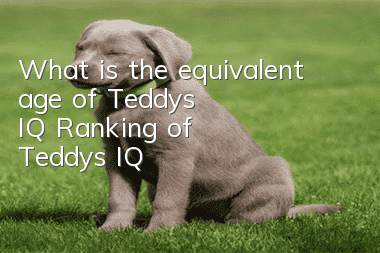Bad breath and dental calculus are chronic health problems. All dogs and cats should pay attention!

Bad breath is a problem that does not obviously affect physical health, but it can affect the owner's mood and the relationship between pets. It is a typical chronic disease.
It can be said with certainty that most pets that eat dog food and cat food will have bad breath and dental calculus problems sooner or later.
So, what are the causes of bad breath in dogs and cats? The main ones include:
Oral health problems (caries, gingivitis)
Diabetes
Kidney disease
Gastric dysfunction
Upper respiratory tract infection
Heterophilia
Tonsil problems
Among them, oral problems, stomach discomfort, and dietary abnormalities account for the majority.
Causes of odor formation:
Just like human bad breath, bad breath is directly produced by anaerobic bacteria.
Anaerobic bacteria exist in the mouths of animals and usually help decompose certain foods and aid digestion. However, when they combine with proteins composed of certain sulfide amino acids, they produce hydrogen sulfide with a unique rotten egg smell.
Expanded content:
Anaerobic bacteria secrete sulfur compound gases, such as methyl mercaptan and hydrogen sulfide, which smell like spoiled cabbage and rotten eggs. Methyl mercaptan and fecal odor can appear in feces, or smell like Isovaleric acid that smells like foot sweat. Other molecules recognized in anaerobic bacterial waste include the volatile compounds skatole, putrescine, and cadaverine, the sulfur compounds responsible for the odor present.
Anaerobic bacteria mainly live in the gaps between taste buds and in the throat or tonsils. They like low-oxygen, debris-filled environments, such as plaque, calculus, mucus and infection in the mouth.
Ear and respiratory infections can also cause the growth of anaerobic bacteria, which is why severe bad breath accompanies ear infections.
Dogs suffering from periodontal disease may see yellowing of their teeth, especially near the gum line. This yellowing is called plaque, a combination of anaerobic bacteria, mucus, saliva, and debris in the mouth that eventually hardens into calculus.
Tartar can accelerate the development of gum disease, shrinking the gums, causing them to bleed, and produce painful abscesses. Tartar also exacerbates bad breath because it is a highly concentrated protein "nutrient" layer that allows anaerobic bacteria to thrive.
At the same time, when tooth decay, gum disease, and oral abscesses occur, the pH in the mouth can plummet. Low pH means high acidity is present, promoting demineralization of canine teeth and softening of enamel. Anaerobic bacteria stimulated by low pH begin to multiply exponentially.
Anaerobic bacteria are animal symbiotic bacteria that are both good and evil. Like many other bacteria in the body, they are good for us (digestion) but can also cause harm to us when their numbers exceed the limit, so their numbers are moderate. is the key. This is why we and our pets need to keep brushing their teeth.
How to control bad breath?
1. Have regular dental check-ups.
2. When dental calculus is severe, clean your teeth.
Dental plaque and dental calculus are fertile soil for anaerobic bacteria to survive.
3. Keep brushing your pet’s teeth.
4. Do not overuse antibiotics to treat health problems in dogs and cats.
In addition to the various side effects of antibiotics, antibiotics can also cause anaerobic bacteria to become resistant.
- How to treat hip dysplasia in dogs
- Can a dog’s broken leg heal on its own?
- How to teach a dog to use the toilet
- What should I do if my dog has skin disease? How to treat dog skin disease!
- Signs of disease in dogs
- What causes dogs to poop black?
- Dog Teeth and Oral Care
- Can a pregnant dog be bathed?
- Four Reasons Why Dog Training Fails
- How to feed a two-month-old puppy



